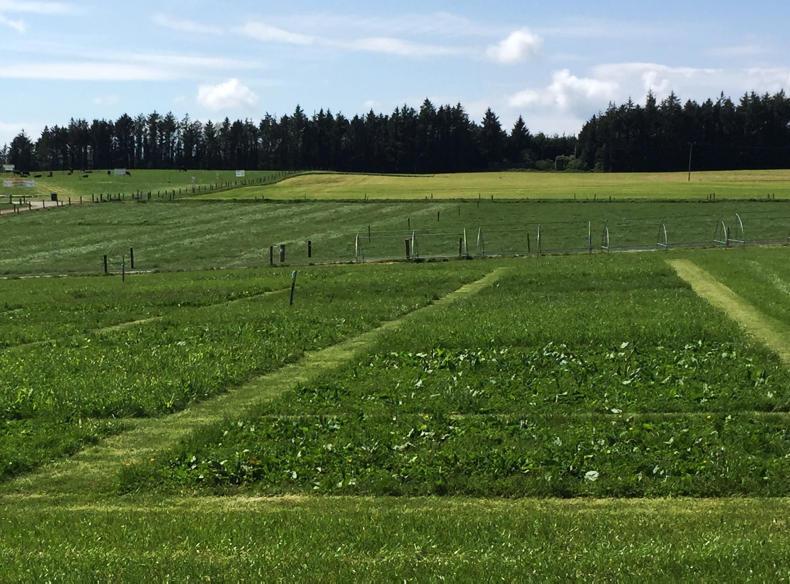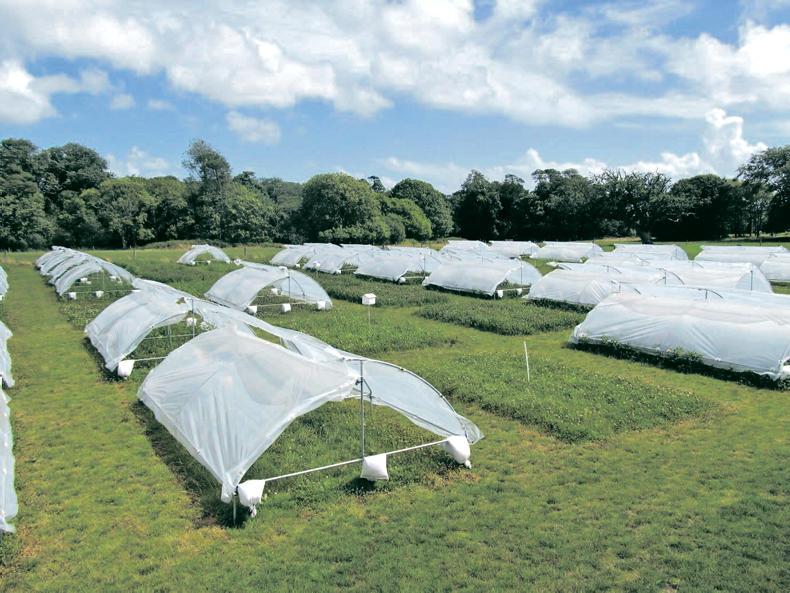Research trials being carried out by Teagasc on multi-species grassland swards are showing some very promising results.
Details published this week by the Teagasc team at Johnstown Castle in Co Wexford show that multi-species sward mixtures consistently outperformed a conventional perennial ryegrass sward while using half the rate of chemical fertiliser.
Teagasc research shows a six-species sward mixture of two grasses, two legumes and two herbs with an application of chemical nitrogen (N) at 150kg/ha/year consistently out-yielded a conventional perennial ryegrass sward fed with 300kg N/ha/year.
Teagasc research shows that even under drought conditions, the yield from a multi-species sward mixture is still able to match and often exceed the yield of a monoculture perennial ryegrass sward under normal rainfall conditions.
“In a two-year experiment, along with another in 2018, we have found a positive relationship between plant diversity and yield stability in intensely managed grassland, even under experimental drought conditions,” said Teagasc.
Fertiliser cost
While the research is still ongoing, multi-species sward mixtures look to have the potential to deliver significant fertiliser cost savings for farmers.
Most of the research trials being carried out by Teagasc on multi-species swards are under simulated grazing or cutting conditions. However, the research body says it is confident these multi-species mixtures will deliver benefits under actual grazing conditions.
Data from a two-year study in France on multi-species mixtures where the sward was given 75kg N/ha/year resulted in positive outcomes for animal performance.
One aspect of multi-species sward mixtures that is more challenging than a conventional perennial ryegrass sward is making silage
When compared against a perennial ryegrass-clover sward, a five-species sward mix (two grasses, two clovers and chicory) resulted in improved pasture intake by cows (+1.5kg DM/day) and increased milk production (+0.8litres/day), as well as higher milk solids (+0.4kgof MS/day).
One aspect of multi-species sward mixtures that is more challenging than a conventional perennial ryegrass sward is making silage. Ensiling a multi-species sward mixture can require a longer wilting period and/or adequate amounts of an effective additive.
On top of this, questions remain over the persistency of multi-species swards longer than four years. To maintain clover content in these swards requires new grassland management techniques such as reducing fertiliser quantities in the summer months.
Overall, the initial research findings on multi-species swards from Teagasc Johnstown Castle are promising. It’s likely these new mixtures will form part of a cocktail of sward types in the farms of the future rather than entirely replacing perennial ryegrass swards.






 This is a subscriber-only article
This is a subscriber-only article












SHARING OPTIONS: